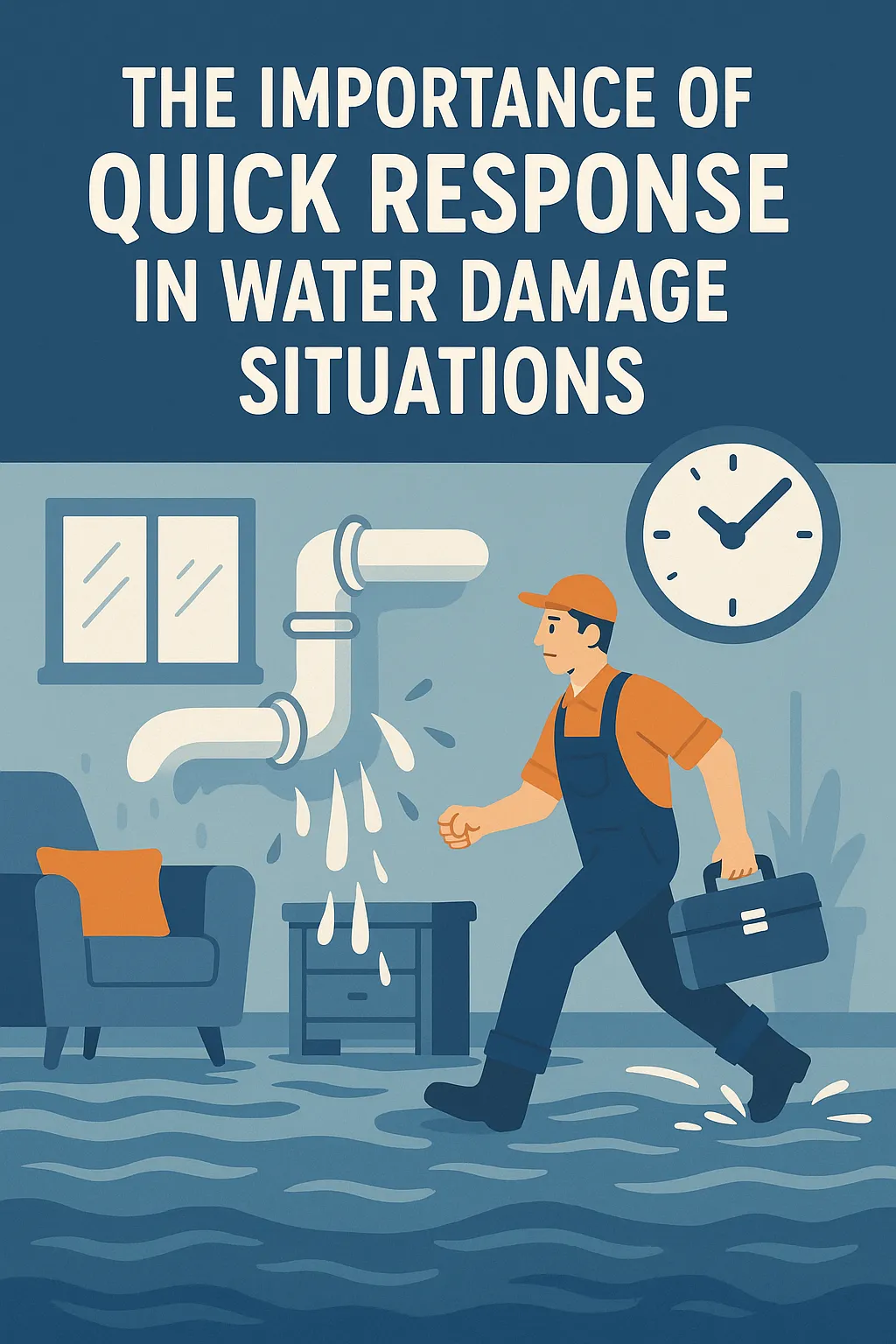Restoration Advice & Tips | Restoration 1 St. Louis Blog

The Importance of Quick Response in Water Damage Situations
The Importance of Quick Response in Water Damage Situations
When water damage occurs, every minute counts. Delayed action can lead to severe structural damage, mold growth, and costly repairs. In St. Louis, where seasonal weather changes can cause unexpected leaks and floods, a quick response is crucial to minimizing damage and restoring your property. This guide explores the importance of acting swiftly, the potential consequences of delayed action, and the role of emergency services in mitigating water damage.
Why Quick Response Matters
Water damage progresses rapidly. Within minutes, water can seep into walls, flooring, and furniture. Within hours, wood can warp, drywall can swell, and carpets may become unsalvageable. The longer water remains, the greater the damage and repair costs. Quick response is essential to:
Prevent structural damage
Reduce repair costs
Minimize health risks from mold
Protect valuable belongings
Consequences of Delayed Action
Failure to act quickly can result in:
Structural Damage: Prolonged exposure to water weakens wood, drywall, and foundations.
Mold Growth: Mold can begin growing within 24-48 hours, posing health risks and requiring extensive remediation.
Electrical Hazards: Water can damage electrical systems, increasing the risk of shocks and fires.
Increased Repair Costs: The longer water remains, the more extensive and expensive repairs become.
Immediate Steps to Take in a Water Damage Emergency
1. Ensure Safety First
Turn off electricity and gas in affected areas to prevent electrical hazards and gas leaks. Avoid standing water if electrical outlets are submerged.
2. Stop the Water Source
Locate and shut off the water source to prevent further flooding. Common sources include burst pipes, broken appliances, and leaking roofs.
3. Remove Excess Water
Use towels, mops, and wet/dry vacuums to remove standing water. For extensive flooding, contact a professional water damage restoration company in St. Louis.
4. Protect Belongings
Move furniture, electronics, and valuables to a dry area. Use aluminum foil or wood blocks under furniture legs to prevent water absorption.
5. Ventilate the Area
Open windows and use fans to improve air circulation and speed up drying. Dehumidifiers can help reduce moisture levels.
6. Document the Damage
Take photos and videos of the damage for insurance claims. Create an inventory of damaged items and their value.
The Role of Emergency Services in Water Damage Situations
Professional water damage restoration companies provide:
Rapid Response: Emergency teams are available 24/7 to minimize damage.
Advanced Equipment: Industrial-grade pumps, vacuums, and dehumidifiers remove water and moisture efficiently.
Thorough Drying: Specialized drying techniques prevent mold growth and structural damage.
Mold Remediation: Certified technicians identify and remove mold safely.
Restoration Services: Repairs and reconstruction restore your property to its original condition.
Why Choose a Local St. Louis Restoration Company?
Local companies understand the unique challenges posed by St. Louis weather and building materials. Benefits include:
Faster response times
Knowledge of local building codes and insurance requirements
Personalized service from professionals who care about their community
Preventing Future Water Damage
Take proactive measures to reduce the risk of water damage:
Inspect Plumbing Regularly: Check for leaks, corrosion, and loose connections.
Maintain Gutters and Downspouts: Clean gutters and ensure downspouts direct water away from your home.
Seal Cracks and Gaps: Seal cracks in walls, foundations, and roofs to prevent water intrusion.
Install a Sump Pump: A sump pump can prevent basement flooding during heavy rain.
Monitor Appliances: Inspect water heaters, washing machines, and dishwashers for leaks.
Conclusion
Quick response is essential in water damage situations to minimize damage, reduce repair costs, and protect your health. By acting swiftly and contacting a trusted water damage restoration company in St. Louis, you can restore your property and prevent long-term issues. Regular maintenance and preventive measures can help safeguard your home against future water damage, ensuring peace of mind for you and your family.
